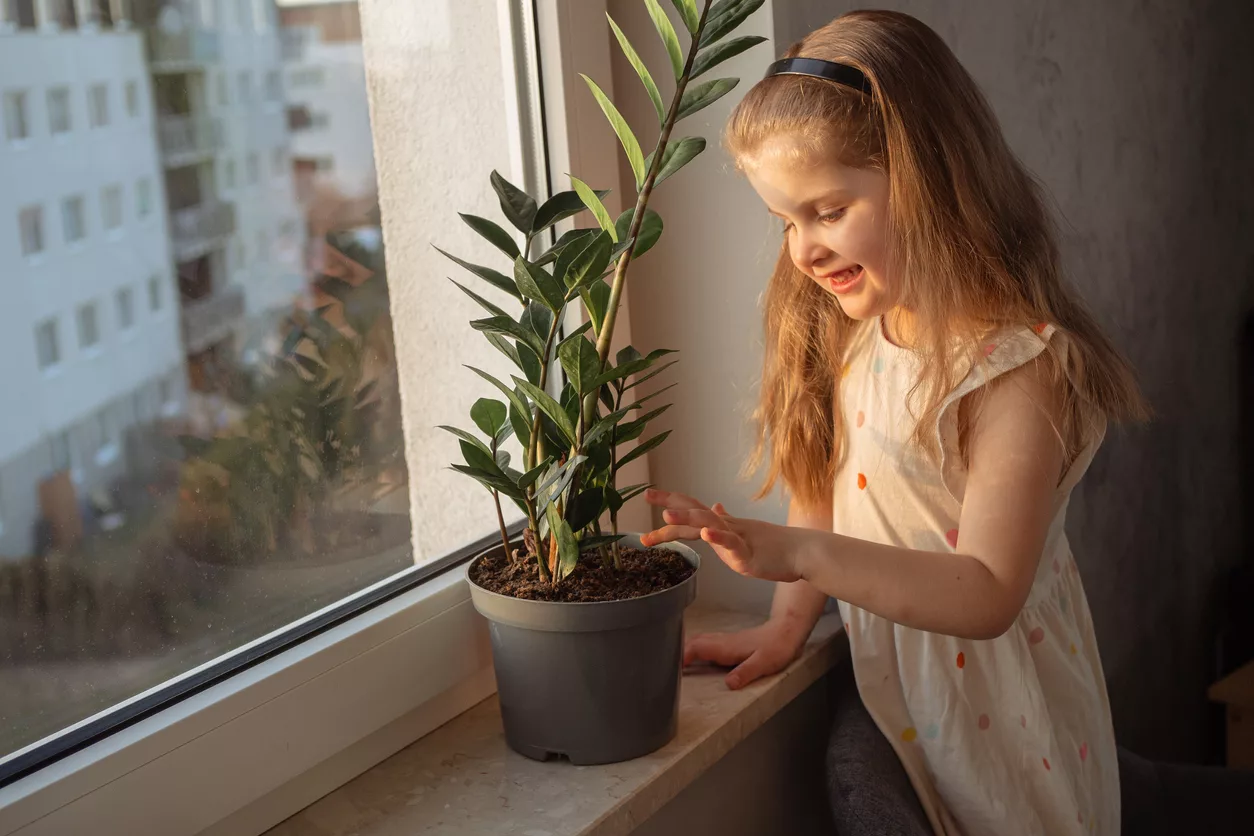Adding indoor plants is a rewarding way to liven up your home. Plants bring a natural beauty, especially when diversifying your selection. Research suggests indoor plants can even reduce stress and increase productivity.
But if plants aren’t the only living things you care for, you’ll want to be careful about your choice.
Children are curious and may have the urge to grab or bite indoor plants—some of which can be harmful. Selecting non-toxic plants for kids prevents irritated skin, nausea, or other health problems.
If your plants are out of reach from children or you don’t have kids, then some mildly toxic plants can still be acceptable in your house. Try a hanging pot or a plant on a high shelf.
Just make sure you don’t have the urge to take a bite out of a leaf.
A Note on Pets: Most of these non-toxic indoor plants are also safe for cats and dogs, but do a quick online search to double-check. We know they’re your children, too.
12 Non-Toxic Houseplants for Kids
Below is a list of child-safe plants that your kids will enjoy as much as you. Although we provide baseline care instructions for each non-toxic plant, it’s always best to follow the care guidelines that come with your plant and research further if you’re unsure.
A Note on Plant Names: We list the scientific name of each kid-friendly indoor plant species next to its common name. “Spp.” is an abbreviation for the plural of “species” and indicates that there are several similar varieties of this type of plant falling under one group (genus).
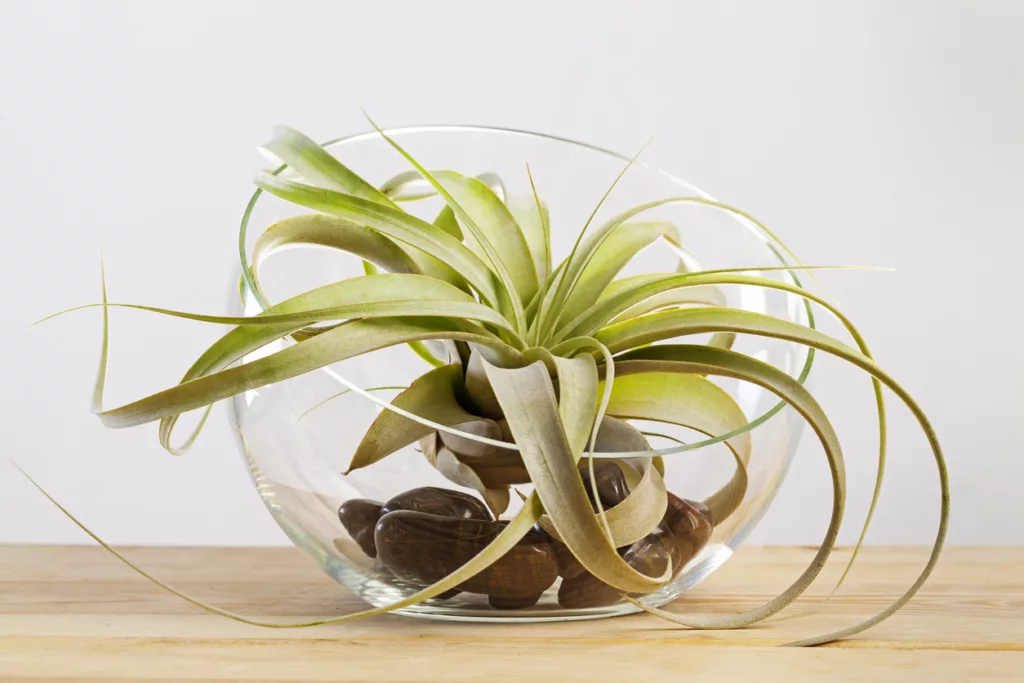
1. Air Plant (Tillansdia spp.)
Description: These spindly plants are epiphytes (meaning they can grow on other plants) and get their nutrients from the surrounding air. There are hundreds of species of air plants with intricate and sometimes colorful tendrils, ranging from quite large to as tiny as a golf ball.
Care: Air plants don’t require soil but do like humidity and bright, indirect light. Water smaller air plants by soaking them in a cup of water for 30 minutes to an hour and then letting them dry upside down.
Why your kids will love it: Air plants come in many varieties, and your kids will enjoy picking one out and watching its otherworldly growth over time.
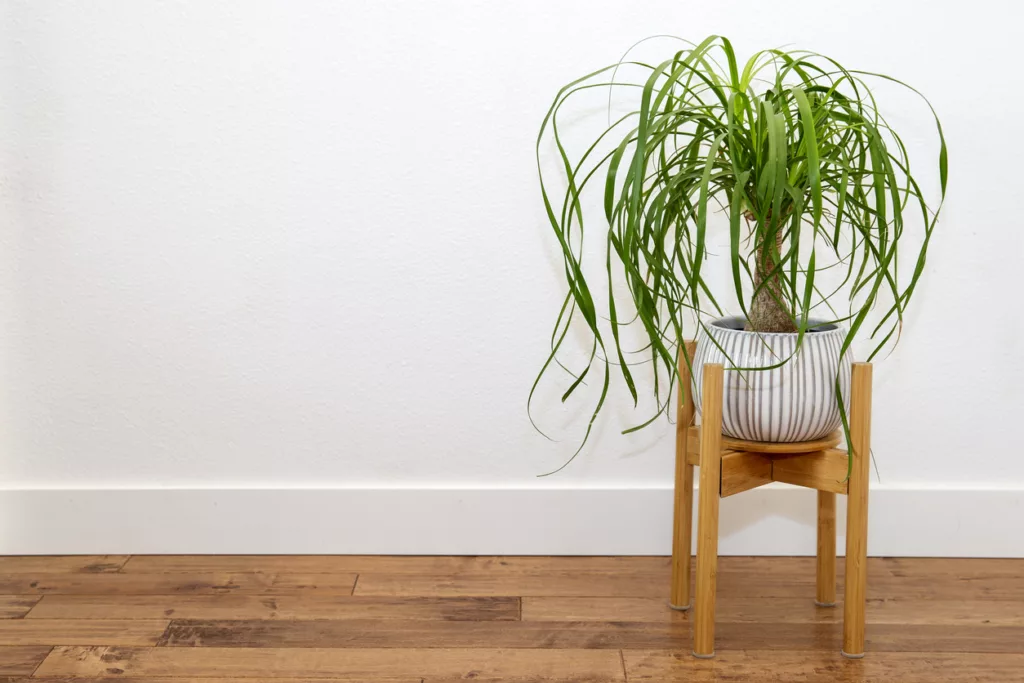
2. Ponytail Palm (Beaucarnea recurvata)
Description: Otherwise known as the elephant’s foot, this low-maintenance plant has a bulbous trunk toward the bottom that narrows upward and reaches about three-feet tall indoors. At the top of the trunk, long, hairlike leaves sprout outward like ponytails.
Care: Native to Mexico, ponytail palms prefer as much bright, indirect light as you can give them and dry, well-draining soil. Water them only when the top couple of inches of soil get completely dry.
Why your kids will love it: If you want to teach them to take care of something, a ponytail palm is easy to maintain. Plus, it looks like a tree out of a cartoon or fantasy world.
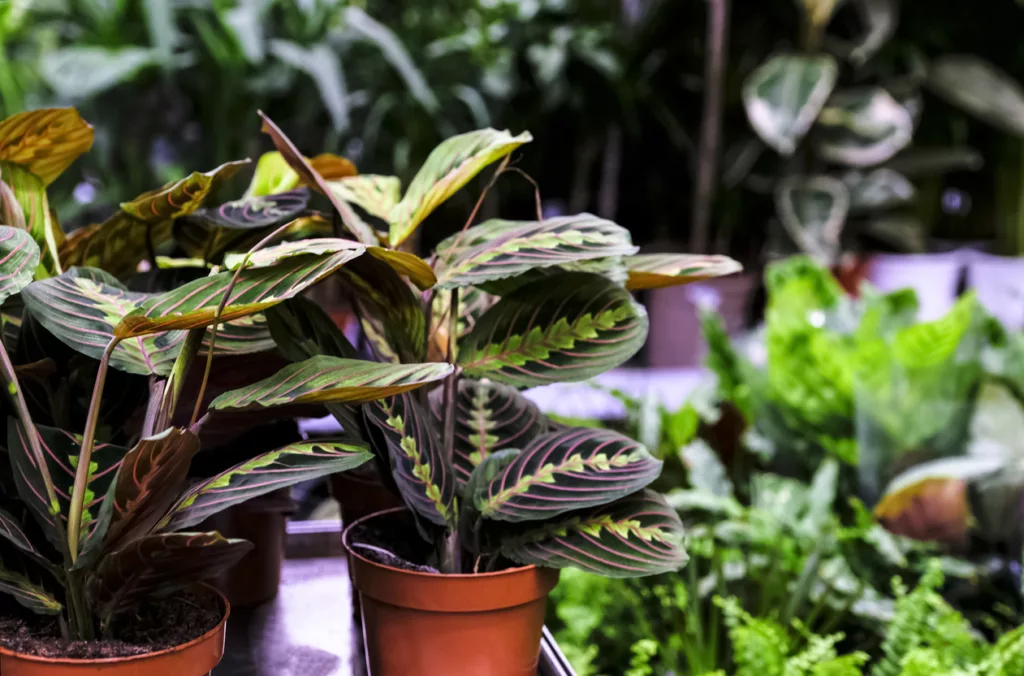
3. Prayer Plant (Maranta leuconeura)
Description: Native to Brazil, the prayer plant has a colorful set of green-and-red leaves, which resemble paintings, and small purple orchid-like flowers. These plants grow slowly and reach a height and width of about one foot.
Care: Be sure to provide prayer plants with high humidity; indirect or low sunlight; and moist, well-draining soil. Water them whenever the top layer of soil gets dry, and provide fertilizer every two weeks.
Why your kids will love it: During the day, the leaves lie flat and parallel to the ground—but at night, they fold up as if praying.
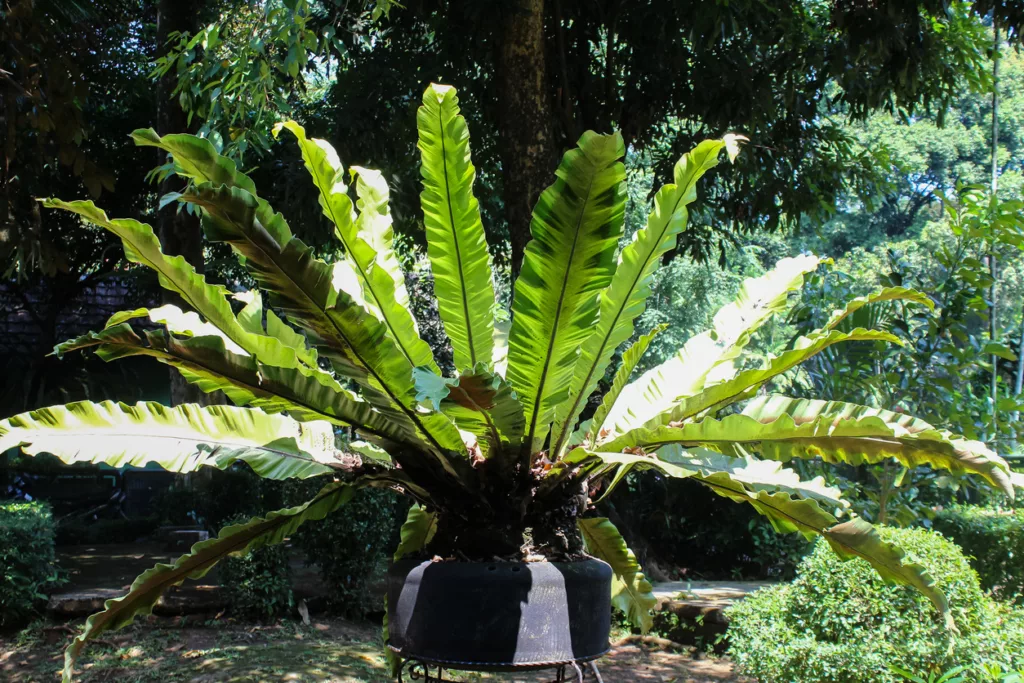
4. Bird’s-Nest Fern (Asplenium nidus)
Description: With long, crinkled leaves resembling a bird’s tail feathers, this epiphytic plant doesn’t produce flowers or fruit. Its leaves grow up and out from a central base, and they develop brown spores on their undersides.
Care: These ferns like indirect light or partial shade; well-draining, peat-based soil; and enough water to keep the soil moist but not waterlogged.
Why your kids will love it: You can add interest to your kids’ bathroom with a bird’s-nest fern because it loves high humidity. Also, you can create a fun project by propagating the bird’s-nest fern spores to grow another fern.
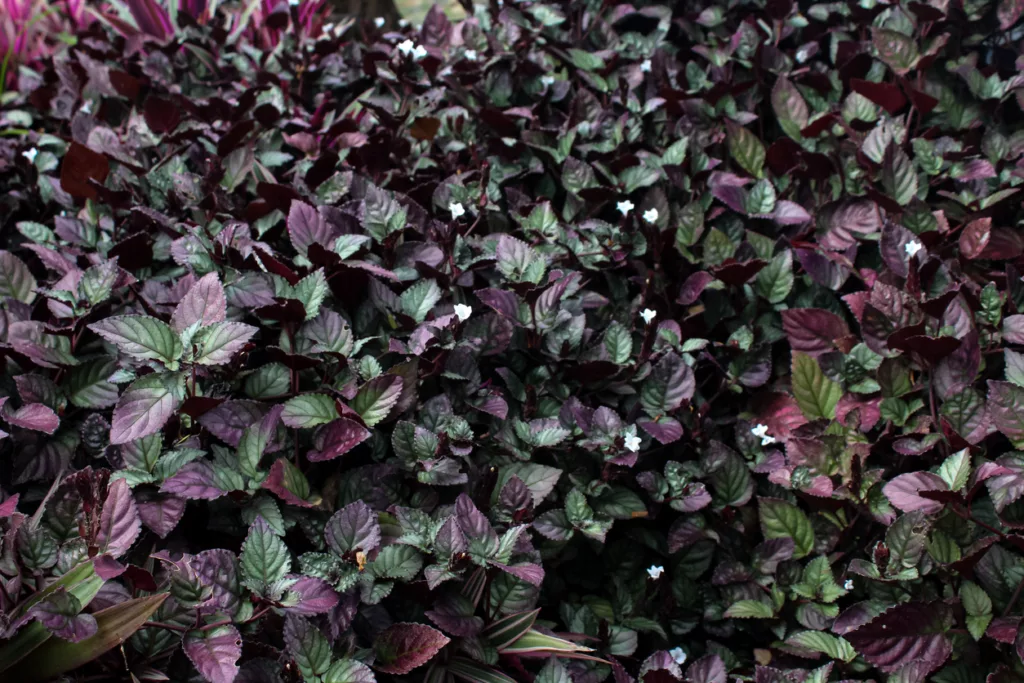
5. Purple Waffle Plant (Hemigraphis alternata)
Description: Otherwise known as red ivy, this relatively small plant has wrinkled green-and-purple leaves as if someone crumpled them, giving it a waffle-like texture. It spreads outward to about eight inches and blooms small white flowers.
Care: These plants like indirect light and frequent watering. Make sure the soil is always moist but not soggy.
Why your kids will love it: If the name wasn’t enough of a hint, the undersides of this plant’s leaves are strikingly purple and may surprise a curious child.
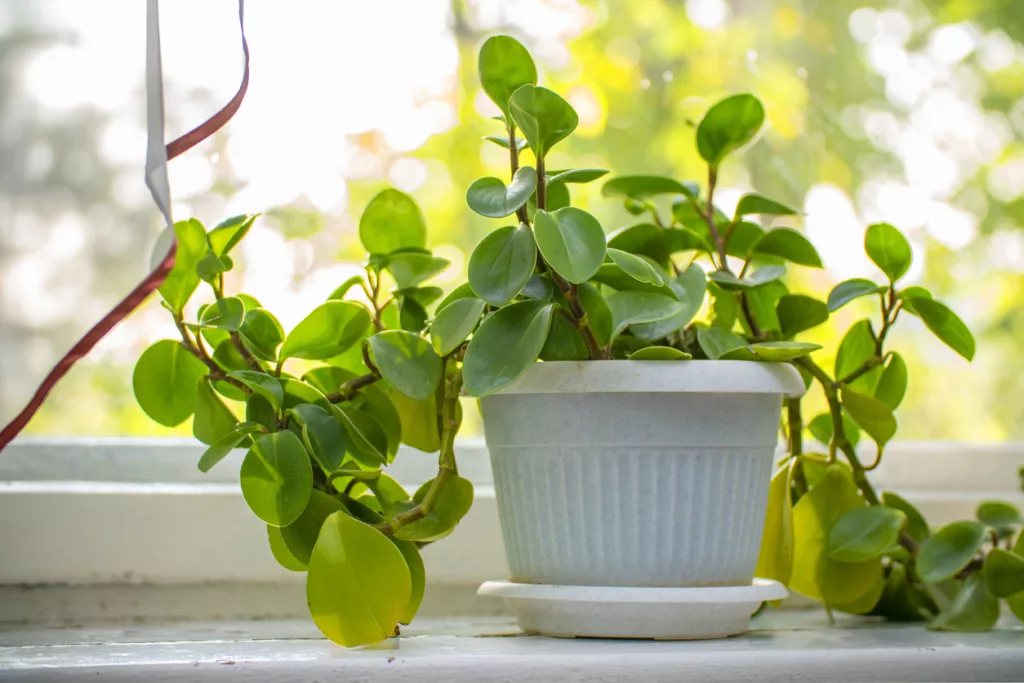
6. Trailing Jade (Peperomia rotundifolia)
Description: Also called jade necklace or creeping buttons, this epiphytic plant’s snaking stems grow many circular leaves and tiny, starlike flowers.
Care: Because it’s used to the shade in its natural tropical environment, trailing jade plants do best in low or indirect light. It also likes higher humidity and less water, so let the top of the soil dry out for a few days before watering.
Why your kids will love it: The trailing jade’s round leaves are succulent, meaning they are fleshy and firm—an interesting departure from other plants’ normal thin and flimsy leaves.
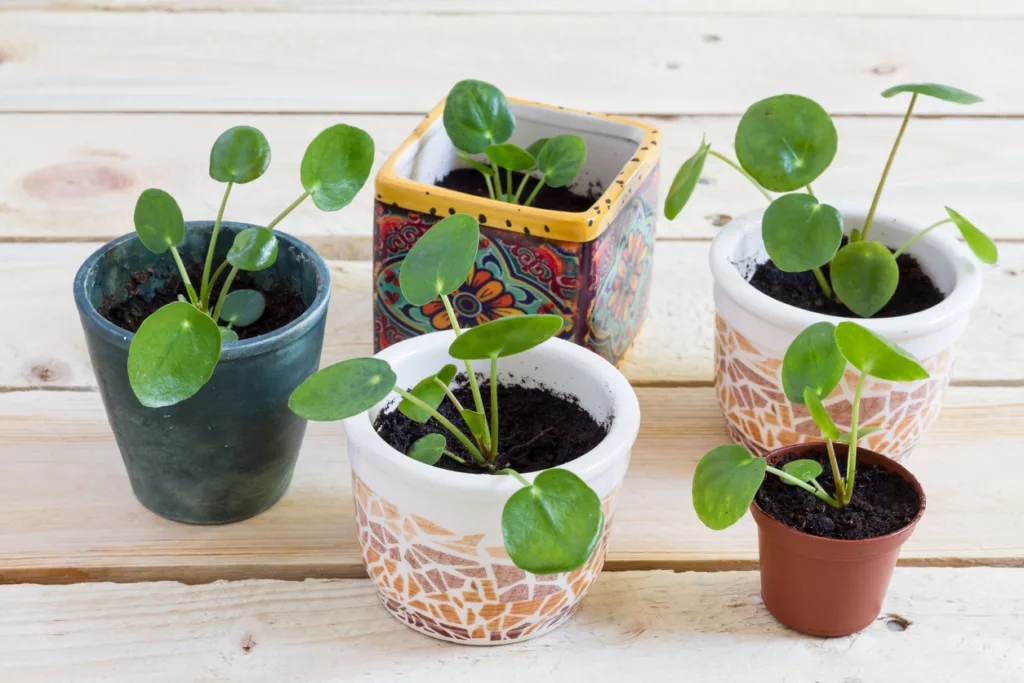
7. Chinese Money Plant (Pilea peperomioides)
Description: Because of its circular leaves, this plant has several aliases, like the UFO plant, coin plant, and pancake plant. The round leaves sit on upright stems growing outward like lily pads, up to a foot in height and width.
Care: To grow full, circular leaves, Chinese money plants like bright, indirect light. Give it well-draining soil, watering it only when its soil is dry and leaves start to droop.
Why your kids will love it: With a nickname like the UFO plant, these plants look alien and funky. Your kids are sure to inspect its many standalone leaves. Plus, they’re easy to propagate with its many offshoots.
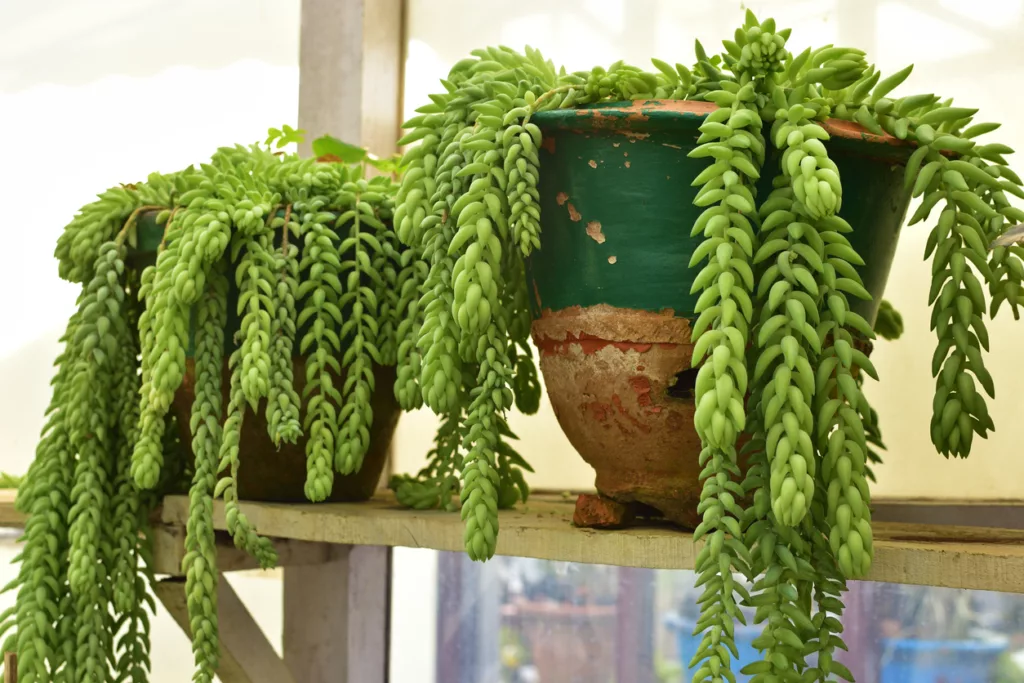
8. Donkey’s Tail (Sedum morganianum)
Description: Donkey’s tail (or burro’s tail) is a succulent with clusters of fleshy, bulbous leaves arranged along several stems. The stems drape over the sides of the plant’s pot and, although rare, may bloom red flowers indoors.
Care: Donkey’s tail can tolerate drought and lower humidity, but they don’t like overwatering, so let them dry out before giving them more water. Give them well-draining soil and bright, indirect light.
Why your kids will love it: Donkey’s tail plants are unlike any foliage your kids will find growing outside. For extra fun, they’ll get a kick out of seeing them grow like hair out of the top of a head-shaped pot.
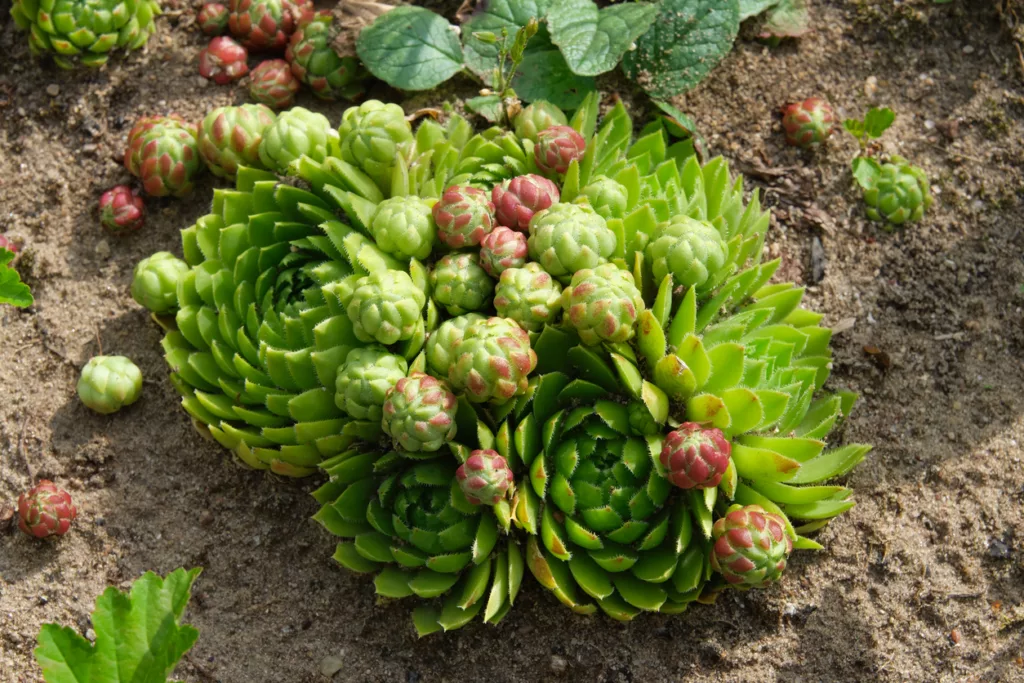
9. Hen and Chicks (Sempervivum tectorum)
Description: Also called the common houseleek, these small plants are succulents named for their central rosette of leaves (the hen) and surrounding smaller rosettes (the chicks).
Care: Hen and chicks plants love full sun but prefer light shade in hot climates. Use well-draining soil with sand or gravel and water them only when the soil is dry.
Why your kids will love it: The appearance of “chicks” are sure to wow your kids as they grow around your plant’s “hen.”
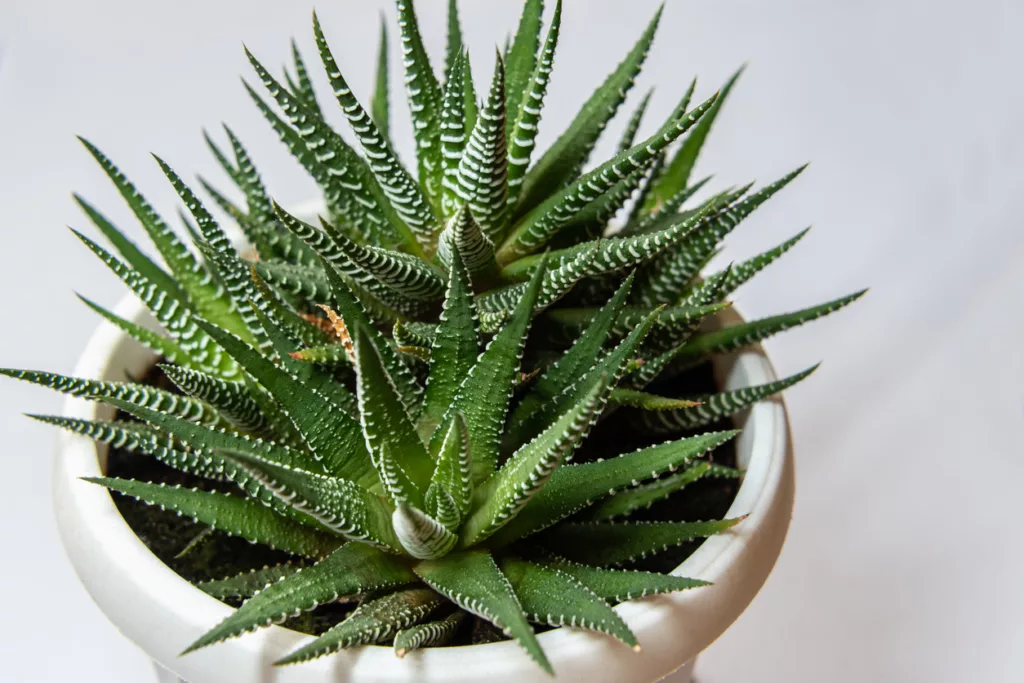
10. Haworthia (Haworthia spp.)
Description: Haworthia succulent plants have pearl-white markings on their fleshy, dark-green leaves growing from a central rosette. Though people sometimes call them pearl plants, don’t confuse them with the toxic string-of-pearls (Senecio rowleyanus).
Care: Keep a haworthia plant in well-draining soil that you water only when dry. Never let the soil or the inside of the rosette get soggy, and keep it in bright, indirect light.
Why your kids will love it: Though they grow slowly, haworthia plants are easy to maintain. Some, like the zebra plant, can live for a long time and be a constant part of your child’s life.
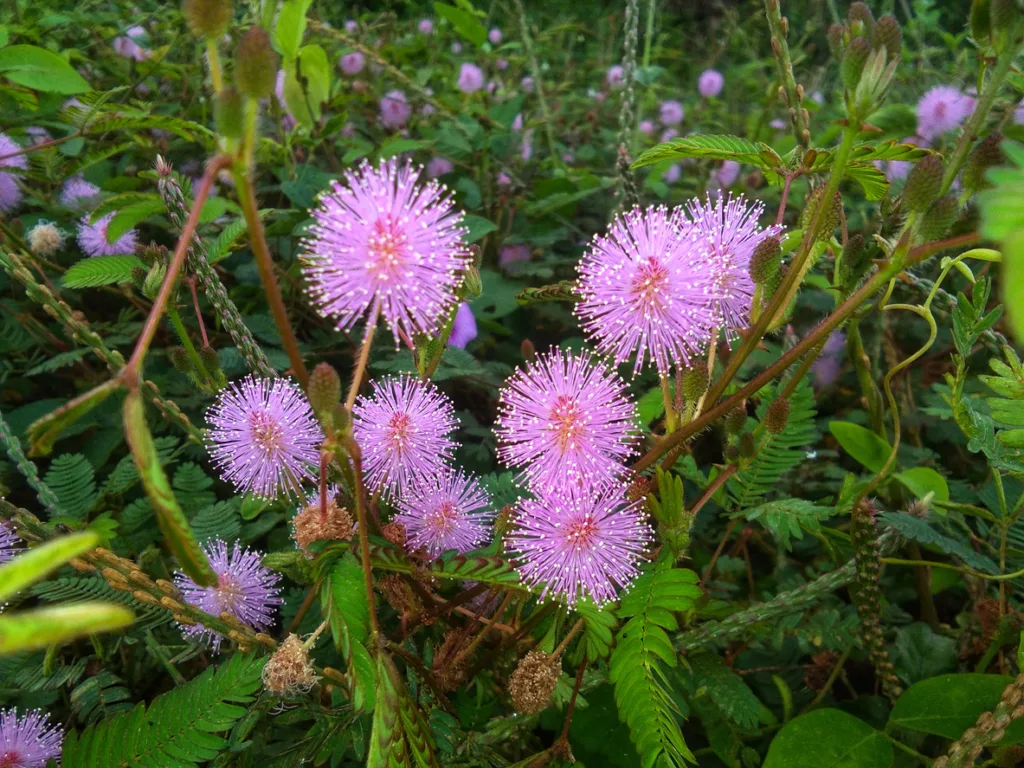
11. Shameplant (Mimosa pudica)
Description: The shameplant is also known as the sensitive plant. It has leaves with several tiny leaflets each and fluffy purple flowers. The leaves physically move on their own when touched or shaken.
Care: Shameplants like bright, full sun and well-draining soil. Keep the surroundings humid and the soil moist but not waterlogged.
Why your kids will love it: As its nickname suggests, this sensitive plant is highly reactive, closing its leaflets at night and when touched. Teach your kids to gently touch the plant to watch it in action.
Warning: It’s best to keep the shameplant as an indoor plant, as it is a rapidly growing invasive species in tropical environments when grown outdoors.

12. Baby’s Tears (Soleirolia soleirolii)
Description: Baby’s tears plants grow up to three feet wide and produce innumerable miniature leaves along fleshy stems. The stems grow outward along the ground and tend to resemble moss.
Care: Keep baby’s tears plants in shaded areas with well-draining, moist soil. Use a wide, shallow pot to maximize the plant’s ability to spread and drape.
Why your kids will love it: A curious child can get lost in the countless leaves on a baby’s tears plant and come back the next day to even more rapid growth.
Toxic Plants for Kids to Avoid
Looking for new kid-friendly plants is easier than determining if your current plants are toxic.
To help you check the safety of your current plant lineup, here’s a list of common plants (and their toxins) that can be harmful to an investigative child:
- Pothos (calcium oxalate)
- Philodendron (calcium oxalate)
- English ivy (saponins)
- Hyacinth (oxalic acid)
- Dieffenbachia (oxalate raphides)
- Caladium or elephant ears (calcium oxalate and asparagine)
- Snake plant (saponins)
- Schefflera (calcium oxalate)
- Peace lily (calcium oxalate)
- Oleander (oleandrin and neriine)
- Rex begonia (calcium oxalate)
For more poisonous and non-poisonous plants, visit the Poison Control’s website or contact its center.
What Happens If Your Child Consumes a Toxic Plant?
While many of these toxic plants are only mildly irritating, every child is different, and toxins like oxalate and glycosides can cause many symptoms, including:
- Nausea
- Vomiting
- Breathing issues
- Skin irritation
- Seizures
- Abdominal pain
In the worst cases, consuming some toxic plants can be deadly.
It’s best to substitute them for a child-safe plant to ensure any accidental plant snacking or handling doesn’t turn into a bigger problem.
Tips for Choosing the Right Plants for a Home With Kids
When choosing a new leafy friend, keep our list of indoor non-toxic plants handy and make the following considerations:
- Let your child choose a plant they like at the store; then research if it’s a safe plant for kids.
- Note your home’s plant conditions, including how bright and humid certain areas get.
- Aim for plants that are easier to maintain so you can involve your kids in plant care.
- Determine how much time and effort you can give a new plant.
A Safe Plant Home Is a Beautiful Home
If you have kids in your life, you want to do everything you reasonably can to protect them. When choosing plants for your house, you’ll want to keep everyone who lives with you in mind.
As a general rule, purchase non-poisonous indoor plants you know you can handle. A dead plant may not physically harm your kid but can attract flies and create bad smells.
The best non-toxic indoor plants are low-commitment beauties that offer wonder for you and your kids, all while ensuring your little ones’ safety.
